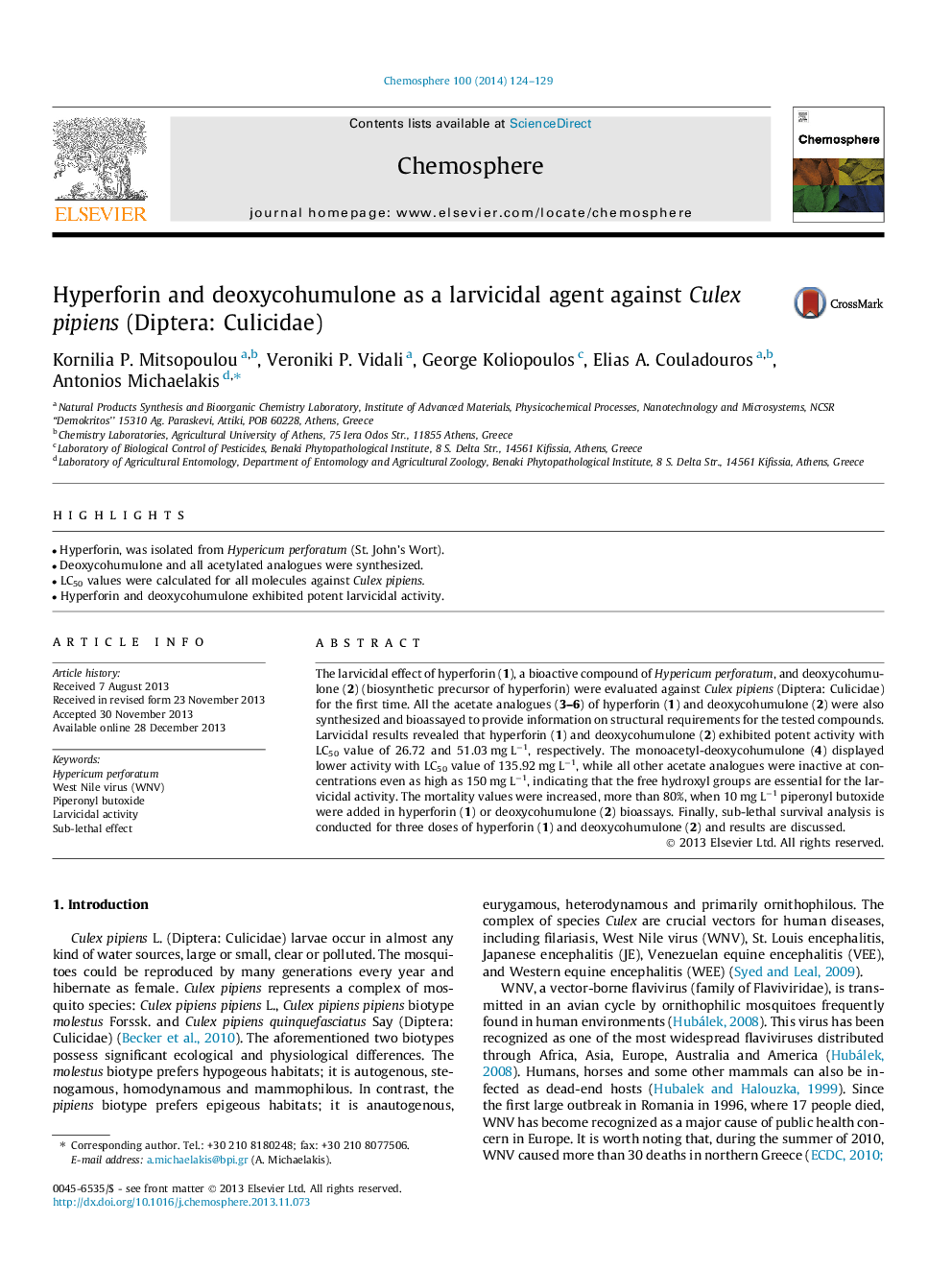| Article ID | Journal | Published Year | Pages | File Type |
|---|---|---|---|---|
| 6309473 | Chemosphere | 2014 | 6 Pages |
Abstract
The larvicidal effect of hyperforin (1), a bioactive compound of Hypericum perforatum, and deoxycohumulone (2) (biosynthetic precursor of hyperforin) were evaluated against Culex pipiens (Diptera: Culicidae) for the first time. All the acetate analogues (3-6) of hyperforin (1) and deoxycohumulone (2) were also synthesized and bioassayed to provide information on structural requirements for the tested compounds. Larvicidal results revealed that hyperforin (1) and deoxycohumulone (2) exhibited potent activity with LC50 value of 26.72 and 51.03 mg Lâ1, respectively. The monoacetyl-deoxycohumulone (4) displayed lower activity with LC50 value of 135.92 mg Lâ1, while all other acetate analogues were inactive at concentrations even as high as 150 mg Lâ1, indicating that the free hydroxyl groups are essential for the larvicidal activity. The mortality values were increased, more than 80%, when 10 mg Lâ1 piperonyl butoxide were added in hyperforin (1) or deoxycohumulone (2) bioassays. Finally, sub-lethal survival analysis is conducted for three doses of hyperforin (1) and deoxycohumulone (2) and results are discussed.
Related Topics
Life Sciences
Environmental Science
Environmental Chemistry
Authors
Kornilia P. Mitsopoulou, Veroniki P. Vidali, George Koliopoulos, Elias A. Couladouros, Antonios Michaelakis,
